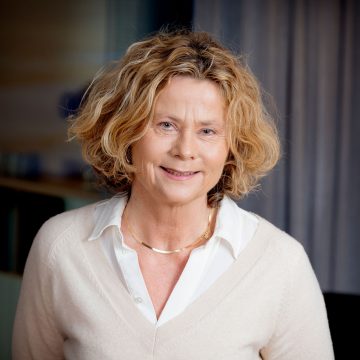
COLUMN. Recently the vice-chancellor and the University Board decided that the extra basic funding the university has received from the Swedish government for research and doctoral studies will favor complete academic environments. The decision means that the addition of SEK 55 million will be allocated to four faculties, and Sahlgrenska Academy is not among those receiving the funds. In this column Dean Agneta Holmäng calls for a more long-term plan to bring about more predictable financial conditions.
Building successful research environments is an assiduous effort that takes a long time. Since establishing Sahlgrenska Academy, we have, for example, worked long-term to strengthen the resources for health care and health sciences research. We have been careful to “hurry slowly” so that the departments in which this research is conducted will have time to plan and implement the recruitments and measures required for good development of activities and operations. Now we can proudly state that we have nationally and internationally leading research in these areas. One example we might site is the Center for Person-Centered Care, which celebrates its tenth anniversary next year. To achieve such success, investments need to be made gradually; they need to be long-range, stable and predictable.
With this in mind, I believe that this year’s allocation of the extra basic funding from the government could have been better handled at the University of Gothenburg. This concerns an extra allocation to Swedish higher education institutions from the government. The University of Gothenburg receives about SEK 55 million, and the university itself decides the best way to use it. At the University of Gothenburg, Vice-Chancellor Eva Wiberg turned to the Research Board for assistance, asking the board to discuss and prepare a proposal, which the university has now also decided on. As a result, half of the money goes to the Faculty of Education, and the rest is allocated among the Social Sciences, School of Business, Economics and Law, and the IT Faculty and overall strategic initiatives.
I am not at all opposed to the university investing in areas such as the educational sciences, but I think this investment could have been better planned. Providing rapid large increments to organizations is rarely the right way to help them grow properly. I would have preferred to see a more thorough impact assessment before the decision. This is also an issue that needs to be addressed by the right authority. Our direct government funding, which constitutes the basis of our operations, should be prepared thoroughly and primarily discussed by those who have line responsibility, such as the University Management Council.
The heads of departments and I recently had a meeting with the vice-chancellor where we questioned the way this was handled. Eva Wiberg was careful to point out that she thinks Sahlgrenska Academy is a fantastic medical faculty, but she stated that this allocation decision is in line with what the university strives for in promoting complete academic environments. The vice-chancellor sees this as a strategic initiative to try to smooth out historical differences among the faculties regarding the relationship between educational and direct government funding for research.
Sahlgrenska Academy finds itself in a situation where we have to make investments, especially on infrastructure in areas such as Sambio Core Facilities and Experimental Biomedicine. We need to do this to successfully compete both nationally and internationally and continue our progress in attracting external research funding. We do not see ourselves as competitors with other faculties within the University of Gothenburg, those now receiving the extra allocation. Instead we compete with other medical faculties, including the faculties in Lund, Umeå and Uppsala. All of them have had access to these funds in accordance with allocation models that are more transparent and stable. As a result, we risk eventually inhibiting our ability to maintain and develop research environments that can retain and attract talented researchers and teachers.
Agneta Holmäng
Note: Read more about the extra basic funding in the Staff Portal: https://medarbetarportalen.gu.se/aktuellt/nyheter-detalj//extra-forskningsanslag-ska-gynna-kompletta-akademiska-miljoer.cid1651989










